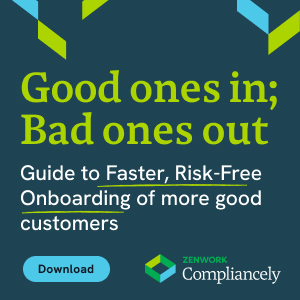The Best Way To Verify Legitimate Businesses and Merchants with Compliancely

Verifying a business entity or an individual is a must if you want to survive in a world that is susceptible to identity fraud, and as a consequence, financial crime. And the statistics are indicating that there is a significant rise in identity theft instances.
Quick Definition: Identity theft is where the identities of the victims are used fraudulently to access certain financial benefits and funds.
In order to access the grants, stimulus, unemployment benefits, and other financial benefits offered by the government, the identities of the account holders are stolen.
The rampant demand for identity verification solutions is another indication that identity fraud is on the rise and must be fought face-first with a technology that outsmarts the perpetrators of the crime.
But to address the issues, businesses must understand that the scope of identity fraud is not limited to enterprise industries, such as banking, finance, and insurance. It extends to all kinds of industries and emerging markets, such as e-commerce, healthcare, lending, logistics, retail, gig economy, and more.
Masking Identities – A Risk Avalanche For Businesses
Anyone could be at the risk of losing access to their identities. Businesses tend to be more susceptible to these crimes since the.
And what’s worse is that businesses are associating with identity crime culprits who disguise themselves as harmless professionals. These disguised profiles dismantle the ecosystem from within through data and security breaches, embezzlement, and other financial crimes. As a consequence, businesses do not only invite federal attention but lose their financial and reputational assets.
These consequences are inevitable if the business is unaware of the severity of identity theft. The unpreparedness of the ecosystem further accentuates the risk.
The only plausible solution that allows you to prevent onboarding and associating with high-risk profiles is identity verification.
Identity verification allows you to identify, validate, and verify the real identities of individuals and entities. Millions of businesses around the world embrace identity verification in some form. However, the most common and effective way to do this is to incorporate the mechanism of identity theft in the KYC and CIP procedures.
The following will discuss how real-time identity verification allows businesses to effectively tell apart legitimate entities and merchants from fraudulent ones.
1. Identity Verification In KYC
Know Your Customer/Know Your Client procedure is a systematic process where the identities of the profiles are gathered along with the proof. Identities, such as the name, date of birth, address, and other information is retained. This information is validated to ensure that the identities belong to the profile that’s claiming the identities; enabling businesses to verify the profile.
When opening an account, the identities of the individual or the entity are obtained to check if the identities really belong to the claimant.
2. Identity Verification In CIP
Slightly contrasting the mechanism of KYC, the obtained identities are validated and verified through the customer identification program. It’s an essential step that allows businesses to establish a foundational relationship with the incoming profile and validate their credibility.
Anti Money Laundering (AML) and Anti-Terrorism Financing (ATF) directives recommend businesses to use government-authorized data lists to validate their identities against authentic records.
A customer identification program, a self-explanatory procedure, primarily focuses on identifying the incoming profile by validating the identities obtained. The scope of identification differs for every business and changes with each use case, the discretion of the compliance team, and the KYC and CIP policies of the entity.
AML directives mandate businesses to comply but advise the entities to regulate the scope of scrutiny within reason and feasibility.
3. Identity Verification In Due Diligence
In a fact-check practice, customer due diligence is an integral part of robust customer identification and onboarding process where the verification processes are executed both before and after onboarding.
Due diligence prior to onboarding enables you to obtain the incorporation details of the merchant or the entity you plan on onboarding. It also enables you to verify the identities of the key executive officers, validate the sources of funding, verify the ultimate beneficial owners, and more.
Due diligence post onboarding enables you to monitor the account activity of the merchant entities for suspicious activity if any. Continued risk monitoring enables you to pull the plugs if you observe abnormal transactions, a surge in account activity, or fund transfers with unknown profiles.
4. Identity Verification In Risk Assessment & Control
While identifying high-risk profiles is an integral part of the customer identification process, assessing the risk and incorporating various measures to control it is a challenge of its own.
Most identity verification solutions help you with the former but the internal KYC policies, suspicious activity protocols, enhanced due diligence, and regulatory practices are intricate for defining the various approaches to assess risk, its severity, and measures to control risk.
A robust Anti Money Laundering KYC policy will help you include all the plausible scenarios of risk along with the compliant action programs should a breach arise.
Identity verification will be centric to the protocol, enabling you to assess the risk of a profile. Solutions, such as Compliancely’s real-time identity verification API enable you to verify the identities of merchant entities with federal authorized data list in real-time.
With 17+ real-time identity checks, Compliancely enables you to identify the real identities, validate the profiles with real-time federal-compliant data lists, and verify the credibility of a profile – all within a few seconds.
